PROLOGUE: For the past several years San Juan County, Utah and its citizens, especially the white Mormon residents of Blanding and Monticello, have been the subject of much scrutiny. From local media attacks to national coverage, many of the county’s residents have been painted in an extremely harsh and unflattering light. And with a very broad brush.
Whether the ongoing criticisms are related to their conservative views on public lands management, the accusations of racism by Anglos against Native American residents of the county, or more specific attacks on the LDS Church, its beliefs and the way of life that it has produced, the assaults have been relentless.
I am not a Mormon and my views probably fall to the Left of most of the county’s predominantly conservative citizens. And I have seen enough unforgivable behavior by some to know that, without question, racism is alive and well in southeast Utah.
But I also know how dangerous it is to make summary judgments. Assumptions and preconceptions are killing “our better angels” in 2018 and that is certainly true here. One evening, a couple years ago, I was unexpectedly invited to attend a dinner in Blanding with a handful of the community’s citizens. They wanted to talk with me about my views on the new monument. I expressed my own un-varnished concerns about Industrial Tourism and within that group, I was surprised to find some agreement.
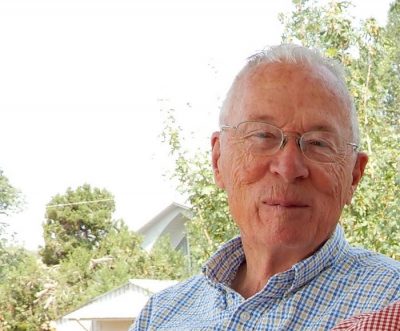 One of them was a tall, soft-spoken gentleman who approached me after the meal. His name was Kay Shumway and he said, “I read your book and agree with a lot of it.”
One of them was a tall, soft-spoken gentleman who approached me after the meal. His name was Kay Shumway and he said, “I read your book and agree with a lot of it.”
While I knew my criticisms of mainstream environmentalists in ‘Brave New West’ would please some folks in San Juan County, there were other parts of the book that I assumed would turn them away. But Kay said, “I like to hear both sides of an argument. It’s how we learn.” Then he explained that he’d even read many of Edward Abbey’s books. That surprised me even more. It was the beginnings of a friendship.
Last summer I asked if I could interview him, to learn more about his life and to hear his views on the rapidly changing world that he has called home for 84 years.
On August 4, 2018, I sat down with Kay and his wife of 60 years, Patsy, at their modest home just north of Blanding.
So Kay…where do we start?
I guess we’ll start with how my family got here. The Shumways actually came to the United States in the 1600s. They were Huguenots and they were persecuted in France when the Catholics had control. So they left France and went to England, then came to the United States. They lived in Massachusetts for generation after generation.
Finally one guy named Charles Shumway went out West, to Illinois. While he was there, some missionaries from the Latter Day Saints Church contacted his family and Charles went down to Nauvoo, which was an LDS settlement in Illinois. He met Joseph Smith, the first prophet of the Church, and he felt that what Joseph was teaching was true, so he joined the church. When he got back to his home in upstate Illinois and told his friends and neighbors he was a member of the church, some of them they beat him up.
So he got his family, put a raft on the Mississippi river, and floated down to Nauvoo. They stayed there in Nauvoo…that was about 1841. In 1846, Joseph Smith and his brother were killed. And the members of the church felt like they had to leave. They were being pushed really hard. So they came out to Utah; Charles was one of the leaders and he came with them.
And, under the direction of Brigham Young, he made settlements in Cache Valley, in the Sanpete area in Utah, and eventually in Arizona. Charles died down there. He had a son named Peter. Peter was a little bit restless so he left Arizona and moved to near Farmington, New Mexico.
Then he heard there was land available for homesteading in Southeast Utah. So he took his 12 children, his wife, and moved to Recapture Canyon, 15 miles south of Blanding. There was a little spring there. Water ran down Recapture in the spring. They had an orchard, they had cows, they had cheese, they had a home. The home has been partially restored now by the way, over a hundred years old.
Peter had a son named Grant Lee and he married Mary Lake and at the birth of their second child, she bled to death because the doctor didn’t take good care of her. We blame it on the doctor. So a few years later my dad remarried and I was the first child from that second marriage. And Dad wanted her to have the best medical care possible. So, as much as I hate to admit it, I was born in Salt Lake. Not in Blanding.
The thing that’ll get you is he took my mother to Salt Lake for medical care to a woman who was practicing birth on the side. She wasn’t a medial doctor at all. She had just practiced giving birth. So my mother felt comfortable. And I was born there and as soon as Dad could get the Model T warmed up, he put me in it and brought me back to Blanding. So I grew up in Blanding.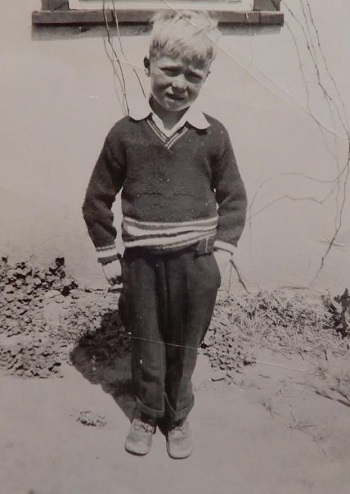
That was 1934. December. It was cold. December the 3rd and it would’ve been later in December when he brought me down here with my mom as a newborn. But I had the perfect growing up life. We lived on the east side of town. I’d get with my boy friends and we’d just take off and go hiking. We would go out to Recapture. And out on Mustang Mesa.
One day, it was Thanksgiving time, we were out of school and we made an extended hike out on Mustang Flat and we jumped and scared thirteen 4 point bucks in one group out there. We just loved life. We were so free. Graduated from high school – by the way, as an aside, my dad finished the 8th grade and he thought that was enough, but he encouraged his kids to go to school. Of his kids, two of them have Ph D’s, two more have bachelors degrees in engineering, both of his daughters are nurses. He encouraged education. But when fall came after graduating from high school some of my buddies said they were going to college. I said, oh I guess I’ll go too. So we went to BYU and registered. Now you have to sign up six months in advance and count your lucky stars to get in.
Was this in the early 1950s?
Graduated in 1953, so it would have been that Fall. BYU was a great experience for a year and a half, then I went on an LDS mission. I served in Nebraska, Colorado and New Mexico. One of the things that happened to me was I got to talking with a Catholic priest. And I could see how great their knowledge was— their grasp of history and world events and religion and it just built a fire in me to get an education, to learn all this stuff, to be knowledgeable. So after the mission I went back to BYU with a whole new mind set.
SEEKING PATSY AND HIGHER EDUCATION
Sometime around now, in the late ’50s, you met your future wife, Patsy?
Patsy was born in Durango, Colorado mainly because her mom had received her nursing degree from the Durango Mercy Hospital. Her dad and mom lived in Blanding but her dad raised sheep that were taken to the high country at Lizard Head to graze in the summer. Patsy has very fond memories of her childhood summers there.
We are four years different in age so despite the fact that for a time her family lived in a home next to mine and that she “borrowed” my bike and crashed it, I did not pay much attention to her. When I came back to Blanding after a two year mission for The Church and six months of active duty as a member of the Utah National Guard it was a different story.
We started dating in December of 1957 in Blanding. We both were enrolled at BYU and went back there in January of 1958. Our dates then consisted of me picking her up the go to the library to “study”. Not infrequently we sat in the car and talked until the library closed then I took her back to her apartment. Our grades that semester were not our highest. We were married on 17 September 1958. Yes you figured correctly. We just celebrated our 60th anniversary. Patsy has been so good to go with and supported me every step of the way.
That’s incredible. Sixty years she has put up with you! And I guess, now that you were a happily married man, you continued to pursue your education?
This was when Vietnam was starting to heat up and they were starting to draft people. So I joined the national guard so I could stay in college and not have to go in the military. But I joined the national guard in Utah, it was an artillery outfit. They sent me to basic training in California and then from there to Fort Sill Oklahoma. But artillery was so boring. I mean, nothing exciting going on. When I got back to Utah, I found out they had a special forces unit in Utah. So I joined that. And that sent me to Fort Benning, Georgia for jump school. So that was exciting. That was something fun to do, jump out of airplanes.
Yeah, well sort of of. That was the start of ranger school. But then after I finished a bachelors and a masters at BYU, I wanted to get a Ph d. and applied to lots of schools. In those days it was easy to get into graduate school. I had lots of opportunities but the one I chose was Purdue university, in Lafayette, Indiana. When I got to Indiana they didn’t have an exciting national guard unit, so I said, I’ve served a few years, can I just be excused – it’s supposed to be a 6 year—they said yeah, just forget the rest of it. So I left the National guard, finished a Ph D, working with corn, as you might guess. Agriculture.
Say that again? You worked with “corn?”
It was on inheritance of a type of chloroplasts in a type of corn plants. So it was basically plant genetics. A lot of people don’t realize that chloroplasts have their own DNA. They’re a little organism by themselves, a little bit self sufficient. Of course they have to live in other cells to get the energy and other things they need. But they do produce sugar through photosynthesis. So we wanted to study that, through electron microscopy.
You realize you’ve lost 90% of the readership?
Electron Microscopy means you can look at things with a microscope that is much more powerful than a regular microscope. You can see the finest of details. You can see almost to the atomic level. That was groundbreaking work we were doing. That led to a postdoc at the University of California Davis and then another postdoc at the University of California Berkeley.
I didn’t know you were this smart!
Don’t know about smart, maybe lucky. Then after two years of postdoc it was time to settle down and get a regular job. The place I liked the most was Washington State university in Pullman.
(At this point in the interview, Patsy interjects…)
Patsy: By then we had 2 children. There’s lots of exciting details about all of that too.
back to Kay…
RETURN TO BLANDING…
So after I’d been at Washington State for 10 years. My mother still lived in Blanding. My mother and father lived here. Patsy’s mother and father still lived here. But all their children were gone. Between the two families they’d raised 11 children and none were here. So we felt some responsibility to them in their old age. My mother sent me a clipping out of the San Juan Record that there was a group organizing to bring higher education to Blanding. Well they needed somebody with some academic credentials, like a Ph d. and I thought and prayed and we decided to move back here, and bring up the kids.
Patsy: By then we had seven.
Yep…Had seven children. That was in 1977. We came back here and just started working for higher education with that group and that led to a job with the College of Eastern Utah, who was willing to have a branch in Blanding. That’s a story too because the academic people, the academic vice president fought against it. But the president had guts and he overrode his vice president.
Why did the college vice president fight against it?
Honestly, because he thought it would hurt the reputation of the college to have Indian students.
Really?
This was the Dean of Instruction. We were having classes in Montezuma Creek, and of course that’s 100% Native American. I got a letter from him saying cease and desist having classes in Montezuma Creek. I didn’t do it. But that’s the attitude some of them had in Price (where CEU was based).
Tell me more about the college president who stood with you.
His name was MacDonald, I don’t remember first name. He realized that the people in this part of the state deserved a higher education. It’s 200 miles to Price. That’s the closest, if you wanted anything past high school. Of course the State of Utah bragged about how we have higher education across the state, from Logan to St. George. But the whole Southeastern Part, almost a fourth of the state, had nothing except at Price.
We had to fight for it. McDonald kept fighting for money. He kept people like me on staff. Bob MacPherson was one of our early teachers. Several others. A lady from Kansas, by the way, Mary Adams came out here with a masters degree and taught English for the next 20 or 30 years.
Lynn Lee was the dean of finance. He had to deal with getting grants. He and I would travel to Price and be in those meetings to fight for anything for this part of the school. That first year the legislature appropriated 60,000 dollars for the college down here but they funneled it through Utah State University. That year, the governor asked higher education in the state to cut back by 5 percent because they were having a hard time coming up with the tax dollars they were promised. Utah State University cut our 60,000 to 30,000.
That’s the kind of treatment we felt like we got all the time. Always on the fight. And if we didn’t go to the meetings they would make decisions that were bad for us. If we were there and fighting, sometimes we could shift the decision.
What kind of facilities did you have in the early days for the college?
There’s a building there in town. It had been an Indian church, then it became a shirt factory when they quit using it as a church. Do you remember the Teton Dam disaster in Idaho? The government brought in movable homes to house people temporarily. They were letting those go for a really cheap price and we got one of those. Mary Adams talks about that trailer. You had to grasp onto the building to keep from falling down the steps, then once you got inside you could put a marble down in front and it’d roll to the back. Stuff like that. She’d teach classes in there. That’s the kind of pioneers we had, that just started making things work.
One of the first classes we wanted to have was to teach nurse assistants. Well to teach anything related to medical you have to understand microbiology, bacteriology and how omnipresent they are and how to protect yourself and your patients from it. I knew quite a bit about bacteriology, so I was teaching that class.
But I had to teach about bacteria. To do that, you have to have some sterile media. To have sterile media you had to have an autoclave We didn’t have an autoclave. So I borrowed Patsy’s Presto Cooker and used that to sterilize the media. You’d take that out and you’d have the kids in the class kiss it and then put the lid back on. You’d have them put their hands on there and then put the lid back on. You’d have them wash their hands really good, touch it, and put the lid back on. Then in just a few days you’d look at those and the ones that had been kissed, the bacteria and fungi growing on there. Gross! So that’s kind of where we started from. I did that as Dean of Instruction for 19 years. And every year, progress. Now you drive out there, there’s new buildings, new dorms.
How did the college change over the years?
I was in charge of all the instruction. I worked for the faculty and the students.
I had to fight for those years. People would say, is that a real college out there. Our students would transfer to BYU and they’d make them take English over again. Finally we talked to them, explained what the class was, an accredited school. We’ve got teachers with master degrees. Finally BYU accepted our credits.
RETIREMENT…BUT NOT REALLY
Then I retired. As a kid I’d gotten into photography. We had our dark room down in the coal bin. Down in the basement, a little place where there wasn’t a window for light. But I hadn’t done much with it until I retired. Then Patsy and I just went full bore on photography. Started photographing flowers and then I realized there were a lot of beautiful things that aren’t flowers. Canyons and vistas and ruins. So for the last—this is hard to believe. I’ve been retired for 19 years. I didn’t expect to live that long and have all that time to do this photography.
Patsy: Tell Jim about your bike rides
Oh…well, I wanted to ride my bicycle from Canada to Mexico, so I’d been training, riding the bike a lot. So over three summers I rode my bike from Canada to Mexico. First year, I went a thousand miles. Then I went back to where we’d quit, and went 800 miles the second year. The third year, I completed the last 700 miles.
Wait a minute…you did all this after you retired?
Yes. The thing I wanted to emphasize, those were the years I turned 63, 64, 65. It’s called the Great Divide Mountain Bike Trail and we went over the Divide thirteen times coming from Canada to Mexico. Up over those mountains, down the other side, go a ways, down another side. That was a great experience.
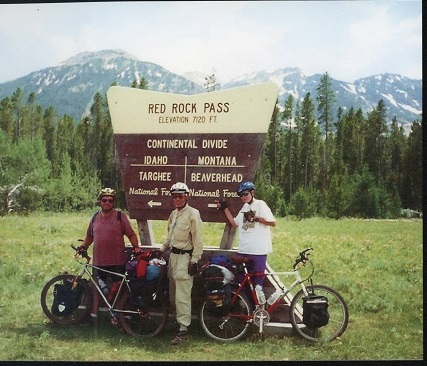
Kay pedaled his mountain bike along the Continental Divide trail from Canada to Mexico over three summers 97-99
And we mostly went on dirt roads, we hated asphalt. Never would go on asphalt unless we had to. I had a little trailer, still hanging in the shed out here, about this long and this wide. With some paniers on the bike and that little trailer, I had everything I needed to survive. A tent, freeze dried food, a little stove and a sleeping bag.
One time we did have to go on the asphalt when we came through the Yellowstone and Teton area. We’d see these huge RV’s, million dollar RV’s, usually with a boat and a jeep behind that. And here I was with my little bike and little trailer and I thought, “I’m just as happy as they are! Maybe more so.”.
Patsy: I did drop him off and pick him up a couple times. It was fun to ride across Wyoming and see antelope.
Did you tell Kay he was crazy?
Patsy: I’d given up on that long ago.
Does your family still own the Recapture property and the orchards?
Yes. The orchards are not in good shape these days. But in the 1980s, we did quite well with it.
Patsy: Tell him about the mountain lions. And the bears and the honey.
I was out at the orchards, and I could see there was some disturbance there I hadn’t noticed before. I got to looking around. There was a dead doe. I could tell she’d been killed by a mountain lion, and had eaten most of it. Later that same day, I was checking the property lines up on the hill above the orchard and the wind was blowing into my face and I was walking quietly through the pinyon juniper forest there. And I reached the point where I was right next to a juniper tree, the leaves were touching my shoulder. I looked down, there were two mountain lions. They had filled up on that deer and were sleeping there. All at once they realized I was there. The one jumped up and started running. The other got up like this, looked at me and growled. And I thought, I’m a dead man. I just looked at her or him. And finally that one turned and ran after the other one.
Patsy: And also the greenhouse.
Well, I believed in solar power. Photovoltaics and water heating. And so, the kids and I built a greenhouse. About 70 feet long and 18 feet wide and the slope of the glazing to get maximum sun in the wintertime. And we grew tomatoes and cucumbers. We had these barrels full of water. The sun would shine in there, heat up the water in those barrels, keep it from freezing at night. So we’d walk in through 2 feet of snow, walk in and be warm, all these lush plants, our tomatoes up 6 feet high. Out at the farm. It’s in disrepair now. My son hasn’t had the time to do the things I did out there, but they hope to restore some of it.
As for the bears, I wanted to have honey. So I put up beehives and I kept getting a larger and larger number of beehives. Finally it reached the point where I had 13 beehives out at the orchard.
Most people don’t know this, but to have an apple that has enough seeds to make the apple grow around them takes about five visits from a honey bee. So if you want to have an orchard you need honey bees. One time I had to go to Price, I was gone for three or four days. When I got back, I went to check out my beehives, and they were torn to pieces all over the landscape. A bear had come in while I was gone and, in three or four days, ate 500 pounds of honey. This was in the fall, when you harvest your honey. I had a thing about bears. They ate my apples, they ruined my beehives. So I built a bear fort and I put cedar posts 2 feet in the ground, double fencing wire over the top and around the sides and drove rebar in the ground. I put the beehives back in there and the bear never got any more honey.
Did you sell your apples locally or were you able to develop a wider market?
So, these last twenty years, you have concentrated on your photography and other than your Canada to Mexico trip, devoted most of your time to Southeast Utah?
Yes…I’ve been to nearly all the ruins along Butler Wash and on Cedar Mesa, to take photographs. Back in, maybe 2005 or 2006, a long time ago, I heard that Josh Ewing and his group were kind of cranking up and they called themselves Friends of Cedar Mesa. And so I started checking with them to see what they’re doing.
The Zephyr has argued that what the area needs is serious enforcement of the existing protections? Do you think Friends of Cedar Mesa understood the protections that were already in place?
Here’s my take. They were already bought out by North Face and so on. So they went for the huge monument and supported that, not because it gave greater protection but because it brought in more people to buy the equipment the tourists needed to see this area. Josh and others were getting funding, a lot of funding, and it changed their perspective. From protection, honest protection, to bringing in all these people who are buying all this equipment and clothing and stuff.
From protection to promotion?
Yeah.
They claim that the original monument designation was necessary because there had been a dramatic increase in looting of archaeological sites Do you agree?
Absolutely not. It’s just something they’ve pushed to try to get the monument, saying that looting increased. It hasn’t. I think I’m enough of an old timer here that I know what’s going on.
By the way as a complete aside, in the 1920s my dad was hired by the University of Utah to go out here on Alkali Mesa and dig up the graves of the anasazi people. But my dad, with his five boys, said do not dig. These were people. They had loved ones. They were buried there out of respect and what’s buried with them is theirs. So I didn’t dig, and my brothers didn’t dig.
But this taught the people here, hey there’s pots and jewelry buried with these people. Some of the folks kept digging.
But now we’re in the worst possible situation. We’re bringing people in. If you don’t mind, I’d like to mention something you wrote in your book… “Progress is we humans recognizing the value the absolute necessity of preserving what’s left of our wild pristine country. Development is seeing it bulldozed under, or perhaps worse, seeing those special places trampled under the feet of well-meaning people who claim they do recognize the value of wild lands but don’t recognize their sheer numbers are destroying it.” What a paragraph that is.
How do you feel about energy development in San Juan County?
I’m for oil well exploration. This is a disconnect that a lot of people have, between them flying a jet from San Francisco to Washington to protest against the people in Blanding. The disconnect between that and having oil wells just drives me nuts. Don’t they realize we have to have energy for them to fly that jet?
Tell us some more about your photography…
Well, I think it was the year 2000 when I realized that digital cameras were available. We were visiting our son in Colorado and I went downtown to a store that had digital cameras and I bought one. I’ve been in love with digital every since. Started out with Nikon, and I’ve just kept buying the newest, latest and greatest. My newest camera is a 45 megapixel camera. I could take a picture and blow it up the size of this room.
That’s what I love to do. Maybe it’s because I don’t remember things unless I photograph it and then I have this nice photograph and I can remember perfectly.
And now you’re into drone photography…
That’s been three years. I wanted to get up– take my photography to a new level, pardon the really bad pun. In this country, when you can fly out over a canyon and see it from the air, there’s something magical about that. It’s so gorgeous. Some guys are using their drones to get really close to ruins that you can’t get to otherwise. That’s okay. At least they aren’t hurting the ruin by trying to rappel into it or do something drastic like that. But for me, it’s the views that you see. From Muley Point. Moki Dugway.
Moki Dugway From Bottom to Top on Vimeo.
I’ve seen your Moki Dugway drone video…really incredible. But here we are in the closing months of 2018. How does the future of San Juan County look to you?
The tourism seems to be coming. Best case scenario, the local people would able to keep their local businesses and do well financially and be able to serve the public. My pessimistic take is that we’re headed straight for Moab. I see a huge increase in traffic. I see everybody renting their “bed and breakfasts.” I see the motels full night after night.
This is a kind of a bellwether for us, this rental over here. As soon as it went on the market, almost every night there’s someone there. In Blanding, the motels can’t accommodate everybody… the people are coming here, apparently.

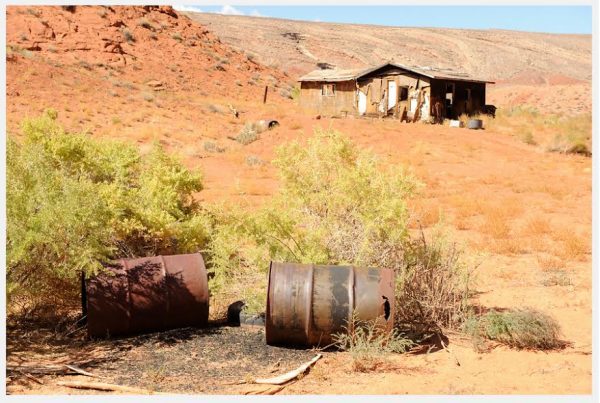
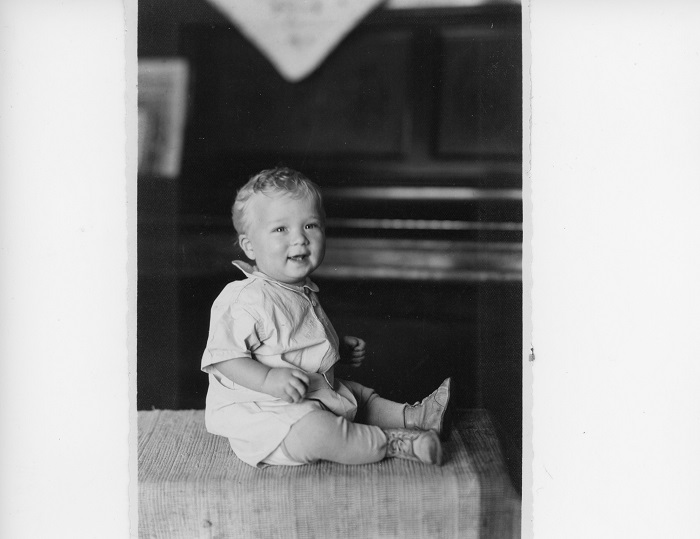
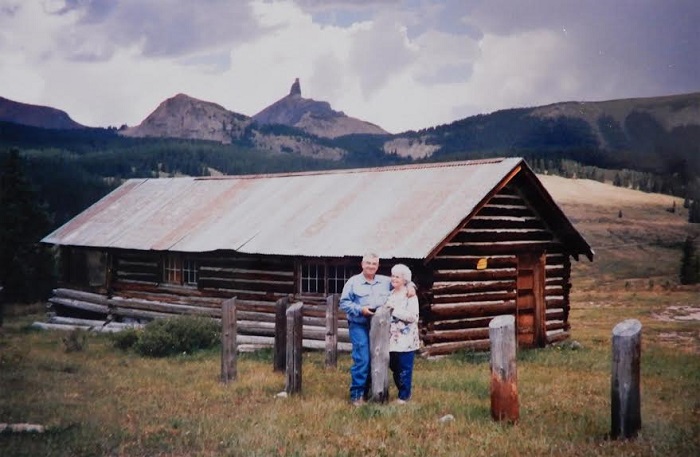
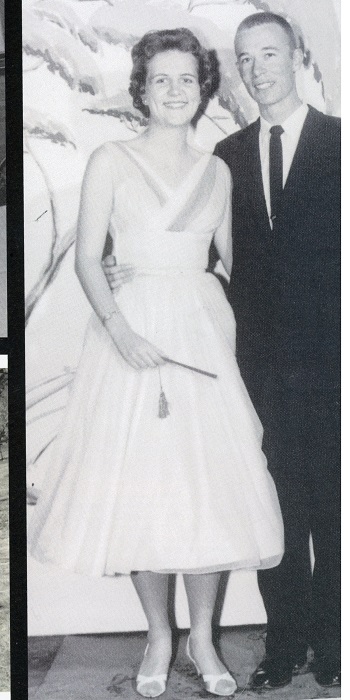
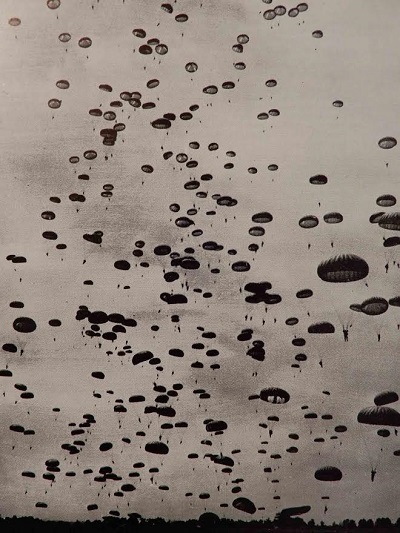

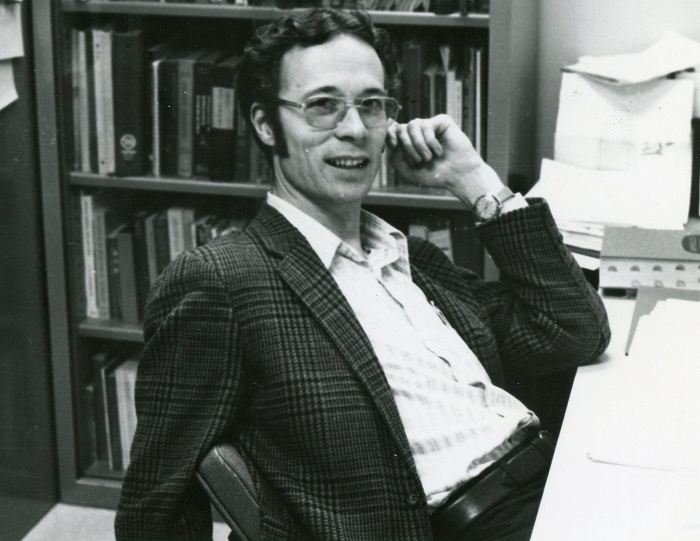
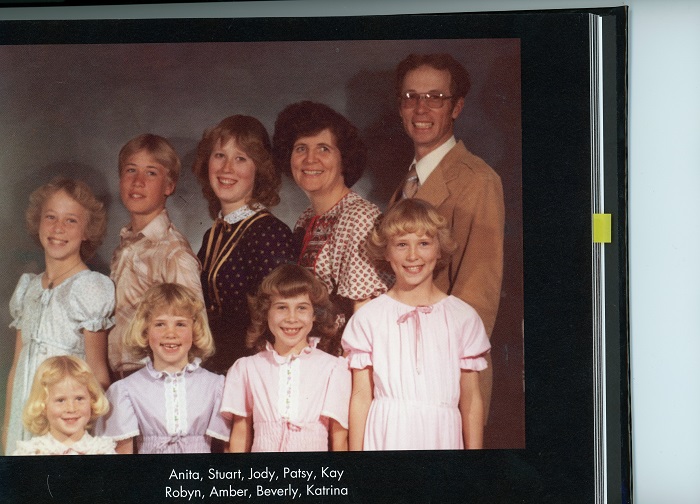
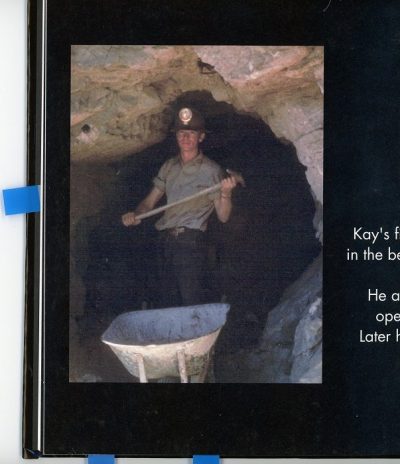
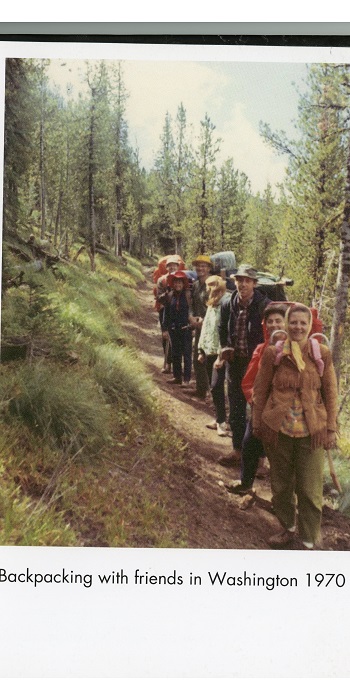
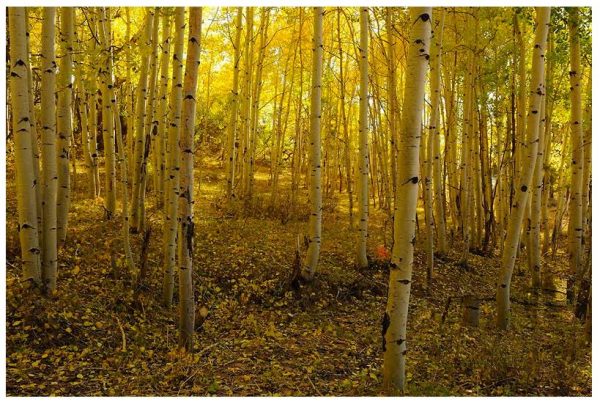
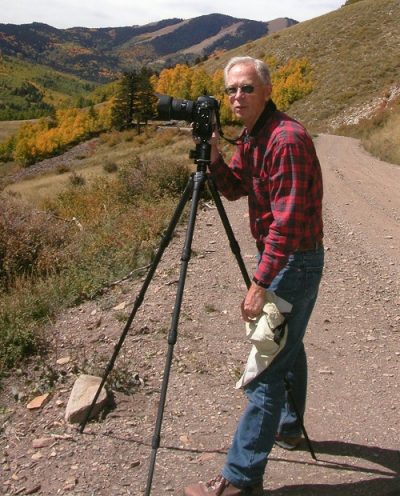
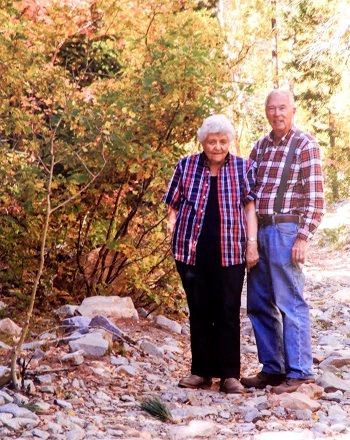
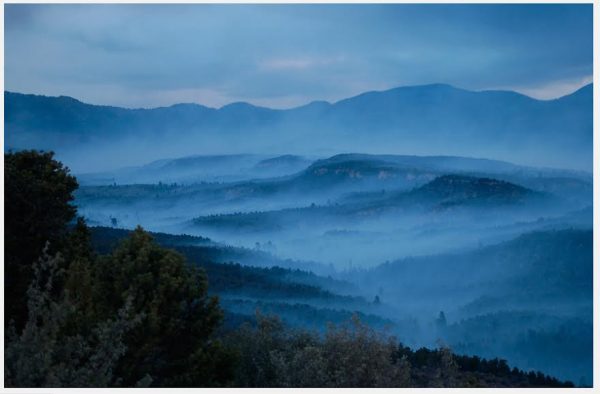
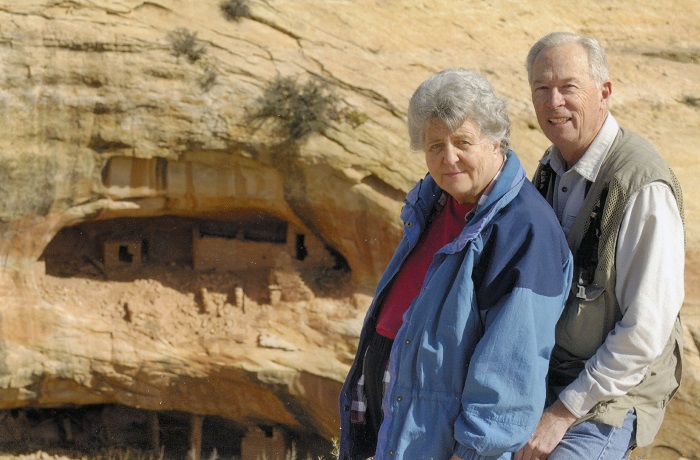
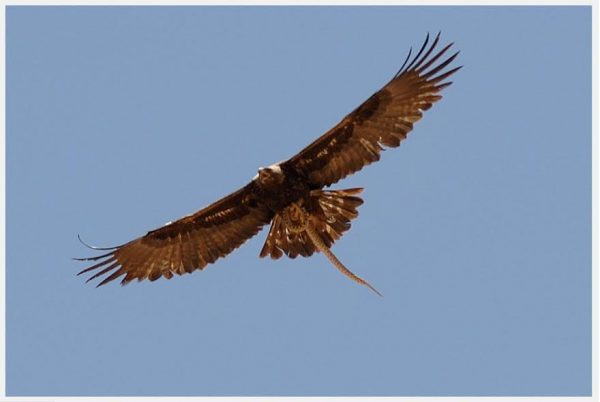
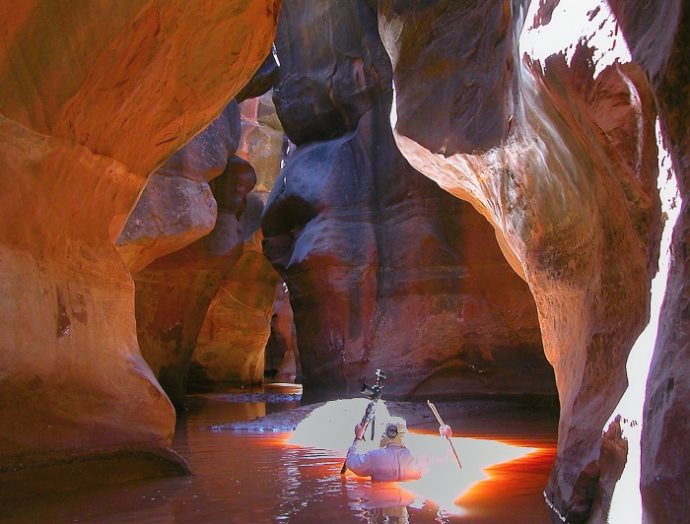
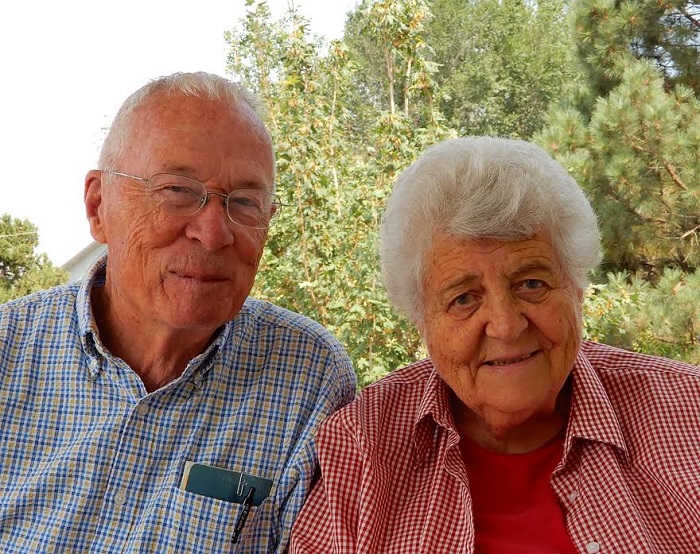




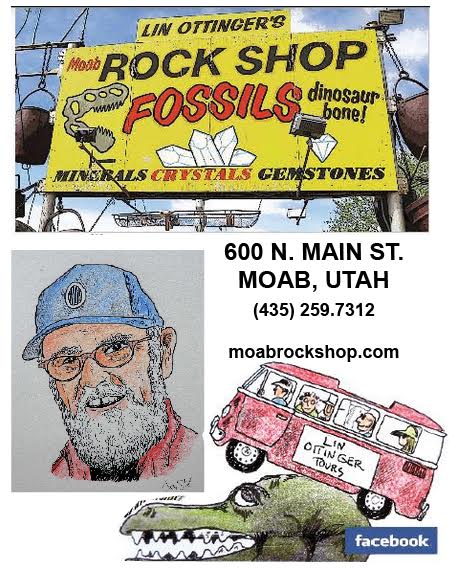
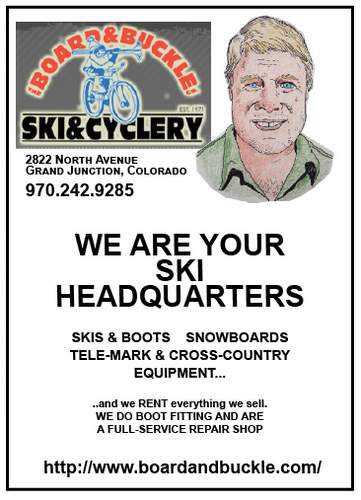
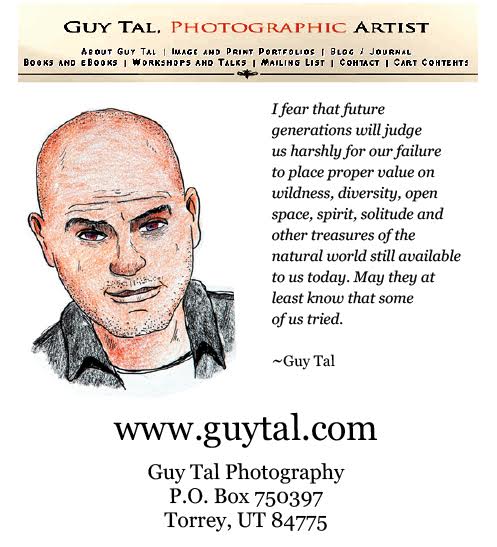
Excellent article.
Wow! I’ve known Kay and his family my entire life. Grew up & went to school with his daughters. However, I had no idea just how many different hobbies he’s had, & how many adventures he’s been on. He’s truly a fascinating man! Glad you had the chance to interview him. This was a wonderful article to read.
Kay and Patsy are some of my favorite people and friends. Patsy has always been so friendly, even when I first moved here and wondered whether I would ever have friends here. Kay, became our home teacher for probably 10 years or more. Kay was an exceptionally kind and consistent man. I loved his lessons. I grew to appreciate him coming to our home on a regular basis.
Your article about these two were very informative. Thank you for writing about this family. We are just friends but I consider them family also. Good job!
Fascinating article! I totally enjoyed reading about the many and varied lives of Kay and Patsy Shumway, both of whom I went to school with in Blanding. I’ve also totally enjoyed Kay’s photography and chose one of his gorgeous photos of Muley Point for the cover of my novel,
The Canyon’s Edge.
I learned so much about Kay and Patsy by reading this. They’ve raised a wonderful family, most of whom I had the chance to teach. He was always very approachable as administrator of the college and receptive to new ideas. I had no idea he had biked over three countries! For the 1980 anniversary of the arrival of the pioneers he also organized a cross country team race from Escalante to Bluff. I can’t remember the details, but he made it happen. These are the best of the best people around. Thanks for doing such a great job.
Another great profile in San Juan county history.
The debates between Nort Face vs fracking and Friends of Cedar Mesa vs Rob Bishop are built upon over population and the economic necessity for constant growth. Until we recon with both we’re just dogs barking across the fence.
Patsy’s a diamond and Kay’s a very smart man. After all he married Patsy. Both great people! My experience is that most Blanding people are like the Shumways: intelligent, down-to-earth, good people.
Patsy and Kaye lived in our basement apartment while going to BYU. I was so impressed with his courage to be a paratrouper, but I had no idea of the rest of his adventures. Always a supportive husband and a great guy. Proud to know them.
This was a very informative article on Dr Kay Shumway. It is not at all like the man I worked with from June 1993 to May 1994.
I was targeted by a student bully. Being an outsider on a temp contract seemed to let that student to demand grades without the corresponding class average. Also demands were made to allow the student choose when tests would be given and what questions would be on the test. When I resisted these demands the student turned to Dr Shumay.
Dr Sumway sided with the students for reasons only he knew. He participated in public shaming sessions in front of my students. I was “investigated” in private for my grading of research projects. No one informed me of this until the last week of my contract.
I should have walked away from my contract in January 1994 but I felt a need to honor the contract I had agreed to.
I was lucky to be able to leave on time to escape the attacks by the student and Dr Shumway. How interesting to read of his stories on prejudice in this article.